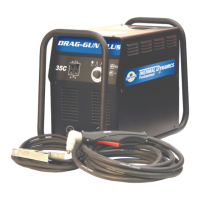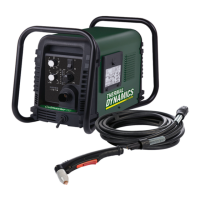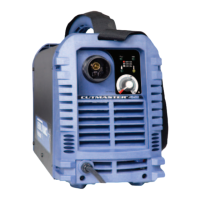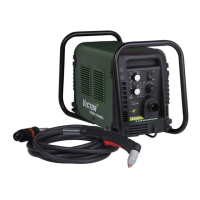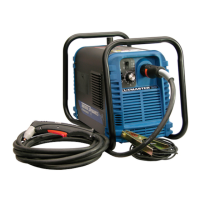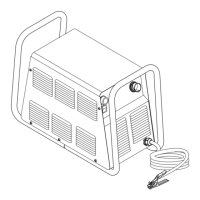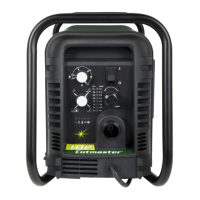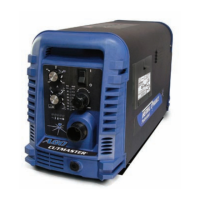TROUBLE-SHOOTING 12 Manual 0-2683
B. Power Source Related
If the service available is saggy, pilot and cut performance
will be degraded. In some cases, the service circuit breaker
may open during use. Some things that will help:
• Use a service fused or circuit breaker for the speci-
fied amps. (Refer to Operator’s Manual 0-2682, sub-
section 4.0-D for service amperage.)
• Use heavy gauge extension cords (Refer to Operator’s
Manual 0-2682, subsection 4.0-D for sizes).
• Use as short an extension cord as possible.
• Try different outlets on different branch circuits. Use
the one that gives the strongest pilot.
C. Power Supply/Torch Related
In some instances when the torch switch is pressed there
is no pilot. You may need to try several times before the
torch fires.
If the torch does not fire (no pilot arc) soon after the torch
switch is activated, try releasing the torch switch and let-
ting the leads bleed down before trying again. This should
help because the torch fires best at a lower voltage with
lower air pressure at the torch.
D. Cutting Related
1. Piloting
One of the features of this plasma cutter is the con-
stant DC pilot. This means the plasma arc is always
“on”- either as a pilot arc, or a cutting arc, resulting in
a very smooth, forgiving system. This also means that
the torch tip will wear fairly rapidly if you pilot for an
extended time or cut with too great a standoff (essen-
tially switching from a transferred cutting arc back to
the constant DC pilot arc).
The best way to prevent this is to pilot for no more
than 5 seconds at a time (or start with the torch in
contact with the material) and “drag cut”, that is, hold
the tip in direct contact with the material to be cut. For
some materials, holding a slight standoff (1/16") may
provide a better cut.
NOTE
Piloting is harder on parts life than actual cutting
because the pilot arc is directed from the electrode to
the tip rather than to a workpiece. Whenever pos-
sible, avoid excessive pilot arc time to improve parts
life.
2. Torch Standoff
Improper standoff (the distance between the torch tip
and workpiece) can adversely affect tip life as well as
shield cup life. Reducing standoff will generally re-
sult in a more square cut.
NOTE
Although the DRAG-GUN will cut using standoff,
this unit is primarily a drag-cutting machine.
3.5 Troubleshooting Guide
A. General
The troubleshooting covered in this Service Manual re-
quires power supply disassembly and live measurements.
Troubleshooting and repairing this unit is a process which
should be undertaken only by those familiar with high
voltage high power electronic equipment.
WARNING
There are extremely dangerous voltage and power
levels present inside this unit. Do not attempt to
diagnose or repair unless you have had training in
power electronics measurement and troubleshoot-
ing techniques.
B. How To Use This Guide
The following information is a guide to help determine the
most likely causes for various symptoms. The guide is set
up in the following manner:
Symptom (Bold type)
Cause (Italic type)
Remedy (Test type)
Locate your symptom, check causes (easiest is usually first;
sometimes the order is important, if noted), then remedies.
Repair as needed being sure to verify that the unit is fully
operational after any repairs.
C. No Power, AC switch on, red (amber for 220V)
indicator dark, no fan.
1. No power from wall unit.
a. Test electrical outlet with voltmeter or some other
known good load (trouble light, hand drill, etc).
If AC line voltage is present, go to next step.
If AC line voltage is not present, replace fuse or
reset circuit breaker.
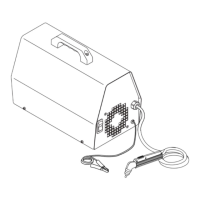
